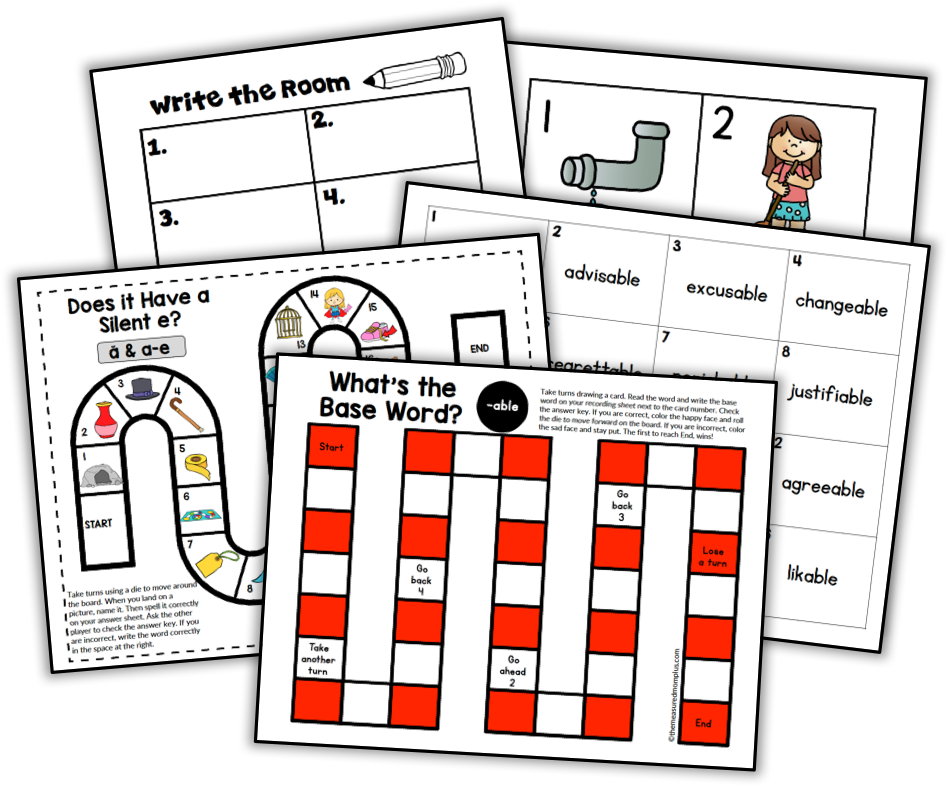Do you want to know how to teach writing in kindergarten? We’re sharing our best tips!

If you want to know how to help your kindergartners learn to be confident, independent writers, then you’re in the right place. Here are our top tips!
1. Move beyond the writing center.
A writing center stocked with paper, alphabet charts, writing instruments, and other fun supplies is a must. The problem is when the center is simply a place that children may choose to visit during free choice time. Instead, teach all children how to use the center’s resources during regular, whole-class writing time.
Watch for an updated writing series in 2023.
2. Have a daily Writing Workshop.
Writing Workshop is a method of teaching writing that allows students to choose their own topics for their own audiences. Students meet 3-5 days per week for a 20-40 minute workshop. The workshop consists of a short lesson, an independent writing period, and sharing time.
It is the ongoing, routine, and personalized nature of the workshop that makes it the ideal choice for all grade levels from K-8.
3. Think through every management detail before you begin.
Envision exactly how you want the workshop to look and sound. Make a list of all the routines and procedures that will make this outcome possible. Where will students write? Where will they get their supplies? How will they move to the whole class meeting area? How will they get your help if they need it? Young children need to talk as they write, both to themselves and their peers. How will you manage the noise level?
4. Let children create picture books.
Rather than giving children a single piece of paper or a bound notebook during the Workshop, give them a stack of 5 pieces of paper stapled together. Children may not know what to do with a single sheet, but they’re familiar with books. They can tell a story when you give them a stack of paper, extending their idea over several pages. Plus, kids like to “make stuff.” Writing a book qualifies.
5. Teach developmentally appropriate mini-lessons.
Instead of starting each day with a prompt (“I like…” or “My mom is…”), give a short (5-10 minute) mini-lesson. At the start of the year a mini-lesson could be something as simple as where to get more paper when you run out of it. Another lesson might be one in which you teach children how to use the alphabet chart to find the sound of a letter. Eventually you will teaching things like leaving spaces between words or even adding dialogue.
6. Teach the writing process.
You’re familiar with the writing process, right? Most of us have heard of pre-writing, writing, revising, editing and publishing.
What I love about the workshop approach is that it allows each child moves through the process at his own pace, at his own developmental level. When you teach kindergarten, the process may look a little different that it does in the other grades.
Pre-writing may simply consist of talking about the writing before the child gets started. Most of the writing time is spent writing, as children do very little revising and editing in kindergarten. Revision may be as simple as adding a detail to a picture or adding an extra sentence to the end. Publishing is also very simple in kindergarten. Have students add their name and a cover to their books and add their name. They can add their books to the classroom reading center and call them “published.”
7. Make sharing time a teaching time.
We don’t want a sharing time in which all children take turns reading their writing to squirming, bored classmates. You can solve this common problem by choosing just a few students per day and highlighting their process.
“Kyla, can you tell us how you came up with your idea?”
“Logan, why did you decide to add that detail to your picture?”
“Mara, I noticed you reading your writing after you finished. Can you tell us more about that?”
Encourage your students to read their writing to the class. Teach their classmates how to listen, ask questions, and give positive feedback.
8. Limit dictation.
Dictation can be useful when the teacher initiates the writing in a modeled writing or shared writing lesson. But when you consistently write down your students’ words during independent writing time, you are communicating that adults write, not children.
If you’re concerned that you or your student won’t remember what he’s written, you could write it discreetly on a sticky note and store it on the back of the writing or in your own notebook.
9. Let children invent their spelling.
I’m usually disheartened when an education blogger shares a post about invented spelling on Facebook; not because I disagree with the practice, but because someone always chimes in with a complaint that “kids today” aren’t being taught how to spell. Invented spelling is lazy spelling, and back in their day the teachers had it right.
Here’s the deal.
Invented spelling is a way to help young writers write everything they want to say before they are developmentally ready to use conventional spelling. When they streeeetch out words and write the sounds they hear, they can write things like “I WNT A MTRSKL” (I want a motorcycle.) When they write their words phonetically, they’re better able to read them back. If we hand children spellings, they miss out on so many learning opportunities.
Read: The Do’s and Don’ts of Invented Spelling
10. Enjoy yourself!
Young children love to write. It is an absolute joy to see them open up their hearts on paper. Rather than being overwhelmed by what they’re not doing yet, celebrate every milestone. Draw on your extra stores of patience and love during this special time of your day.
When you love Writing Workshop, your students will too!
Does teaching writing feel overwhelming? It doesn’t have to be!
You’ll love the encouragement and practical advice in our ebook.





Katrina
Hi Anna… I am teaching first grade and I really need help with to change my jeans. Which book of yours would you recommend for me? Into you have any hardback books that aren’t on email? Katrina
Katrina
Anna…I meant on teaching writing to my kids. I talked into this thing and then didn’t check what I had written! so sorry, Katrina
Anna G
Hi Katrina 🙂 I’m glad you clarified – ha! I do not have any hardback books. My digital writing workshop guide is a really excellent overview of teaching writing with lot of really helpful charts and tips.
https://www.themeasuredmom.com/product/writing-workshop-guide-k-8/
If you want something that will help you go further and you’re teaching first graders, here are some good paper books (aff. links):
-First Grade Writers: http://amzn.to/2wNWLVB
-First Lessons for Beginning Writers: http://amzn.to/2y2Kz3F
zione
I need to subsribe
Anna Geiger
You can do that at the bottom of any post, at the top of the home page, or in the sidebar.
esther esses
Dear Anna,
I enjoy your emails very much and they really help me. I saw you had a chart forb5bhelping young childen help themselves sound out words with pictures for spelling. I think you made 2 mistakes on the chart. For the long e sound you used a picture of an ear. I think that is not a real long e sound because it is r controlled and the e changes sounds because of the r. Also in using orange for the long o sound it also is an r controled sound and not a real long o.
What do you think.
Keep up your great work.
Esther Esses
Anna Geiger
Hi Esther! I think you have some great points. The tricky thing about making sound charts is that people say the sounds differently depending on where they live. When I say “ear” and “orange” they sound just like the long vowel sounds, but in some parts of America people say “orange” with the short o sound. Another example is the word “bag” (or any short a word). Where I live, many people say it with a long a sound. So I guess I just do what works for me instead of trying to get it right for everyone. 🙂